Following the example in scikit-image doc I generate a spherical surface mesh with marching cubes algorithm. I want to center the unit sphere shell at the origin defined by the x,y,z grid. However, I cannot do that, since I don't know how to put x,y,z info with mpl_toolkits.mplot3d.art3d.Poly3DCollection. Here is the code:
import matplotlib.pyplot as plt
from mpl_toolkits.mplot3d.art3d import Poly3DCollection
from skimage import measure
import numpy as np
x, y, z = np.ogrid[-4:4:20j, -4:4:20j, -4:4:20j]
r = np.sqrt(x ** 2 + y ** 2 + z ** 2)
verts, faces, normals, values = measure.marching_cubes_lewiner(r,level=1)
fig = plt.figure(figsize=(10, 10))
ax = fig.add_subplot(111, projection='3d')
mesh = Poly3DCollection(verts[faces])
mesh.set_edgecolor('k')
ax.add_collection3d(mesh)
plt.show()
The problem is that the marching_cubes_lewiner function does not take x,y,z into account. How can I center the resulting sphere at 0,0,0 as implied by the grid?
